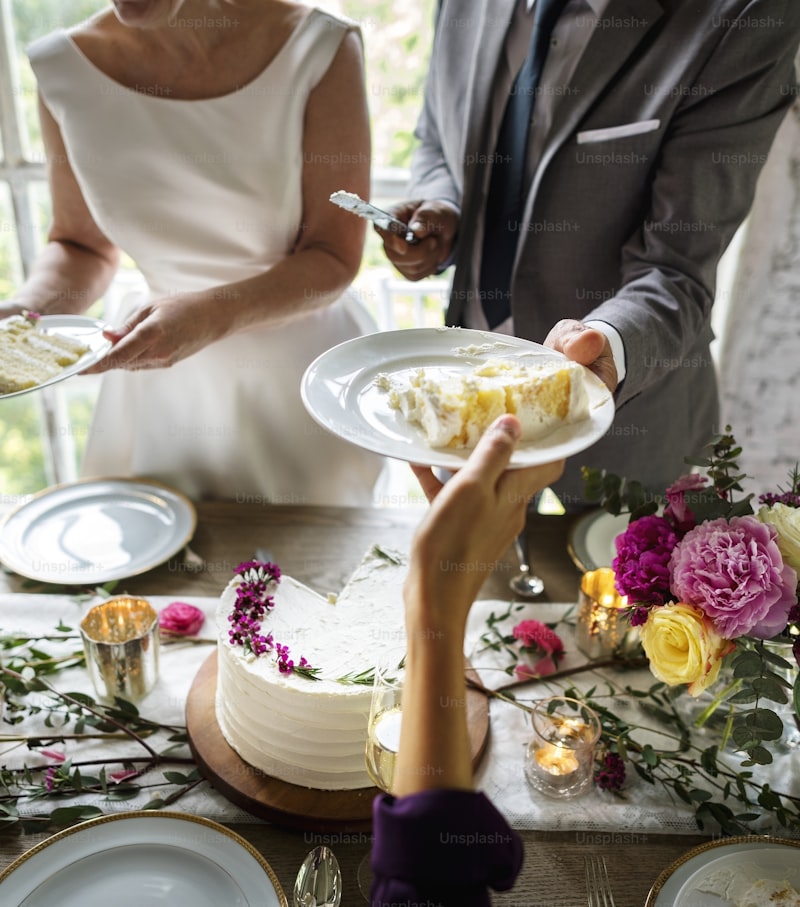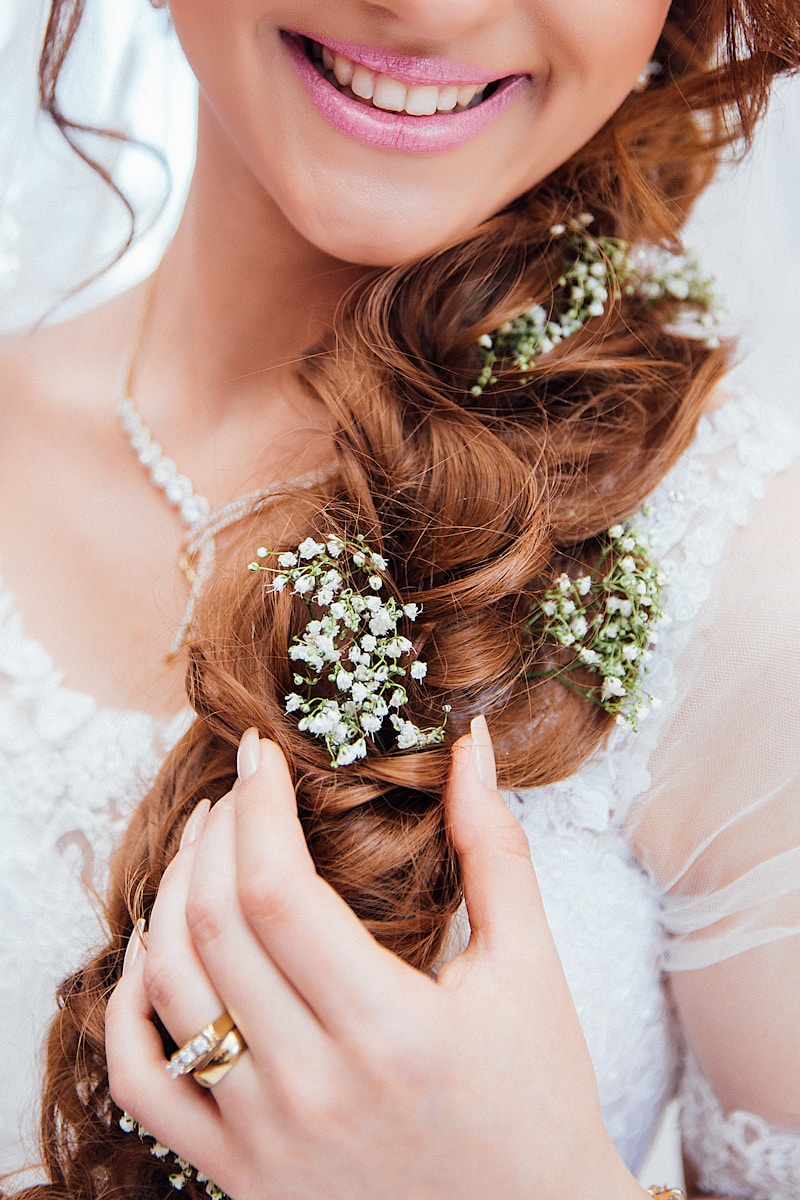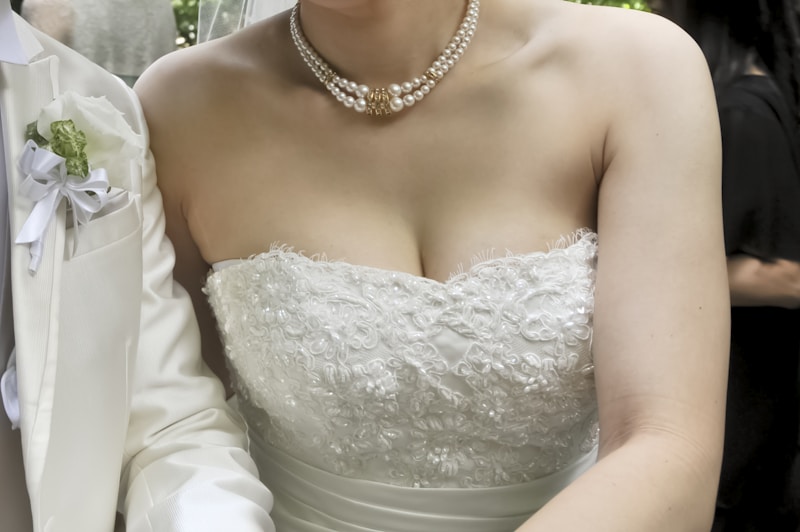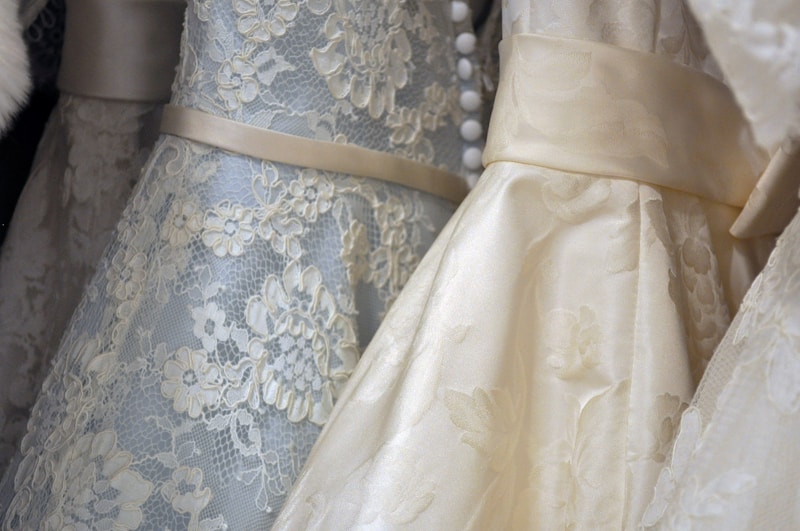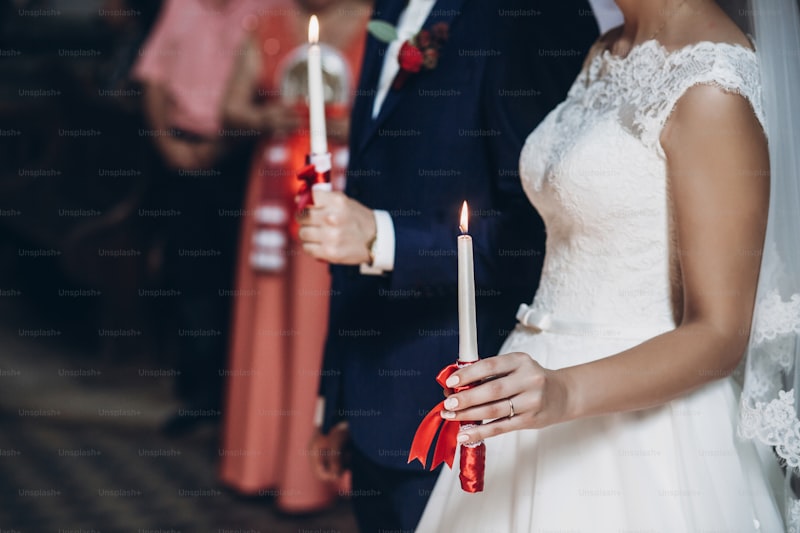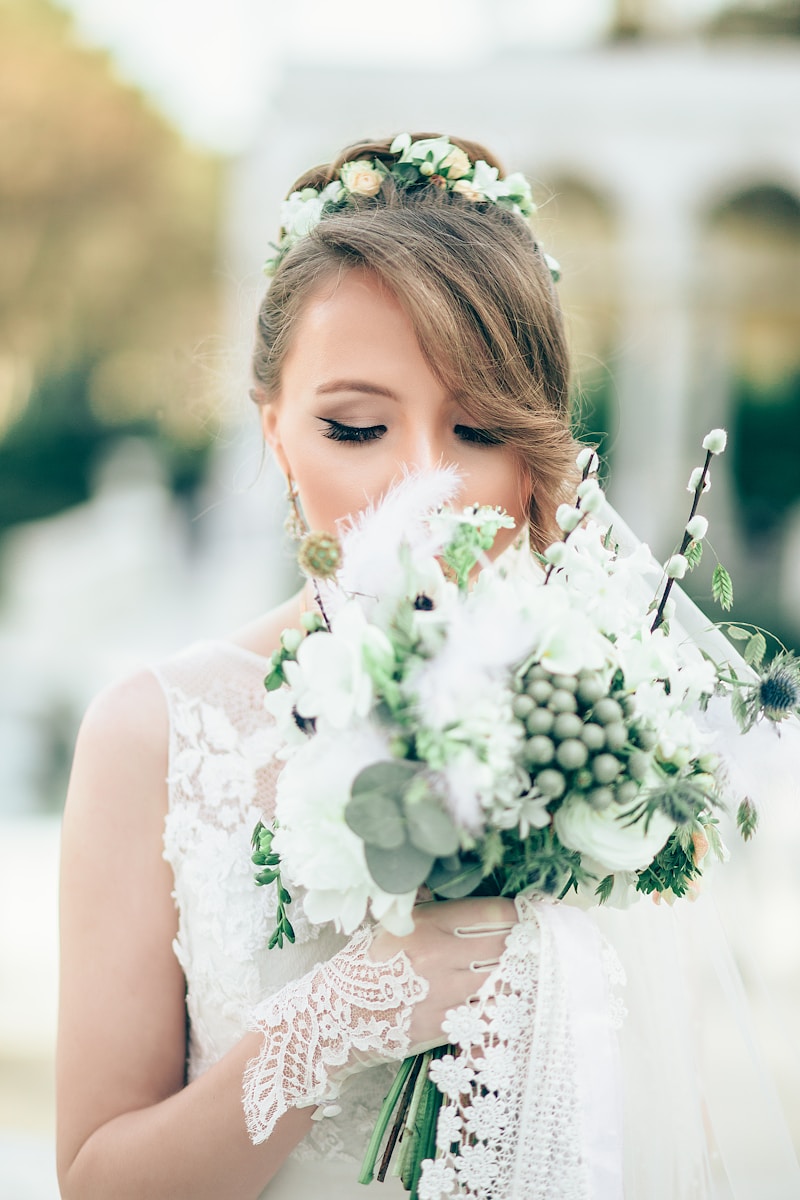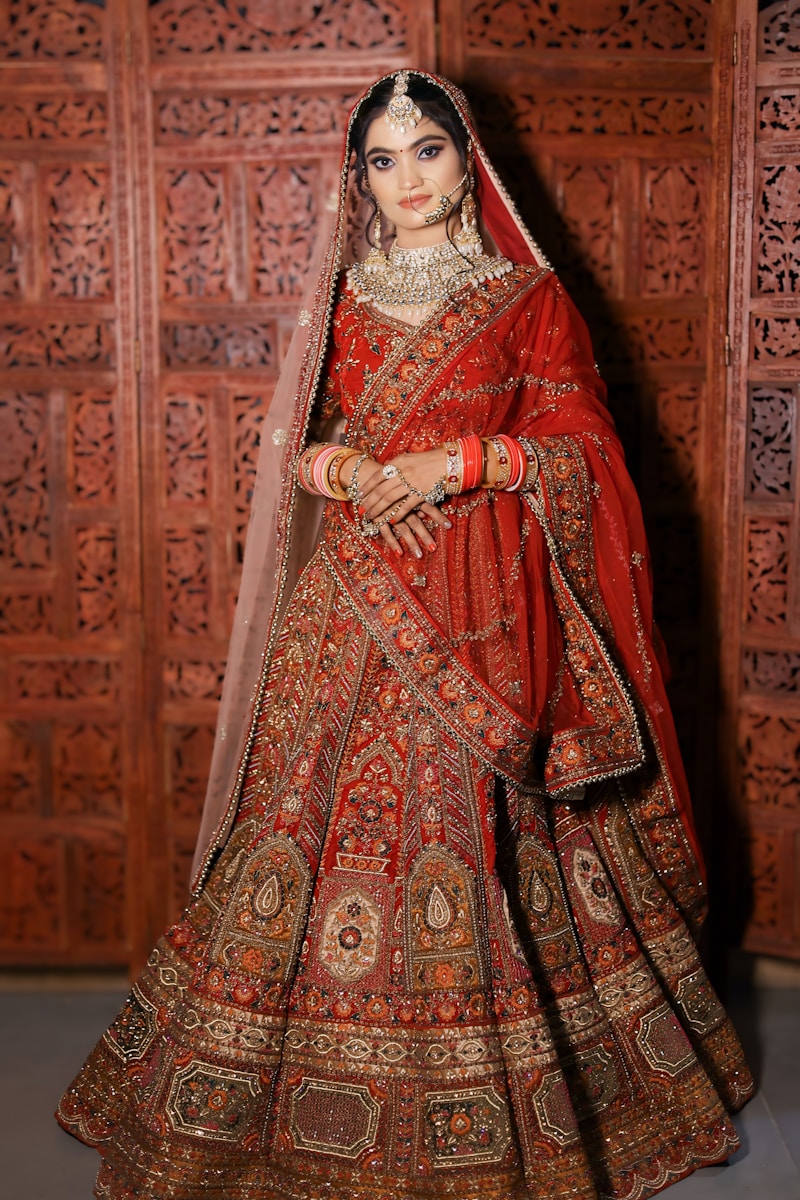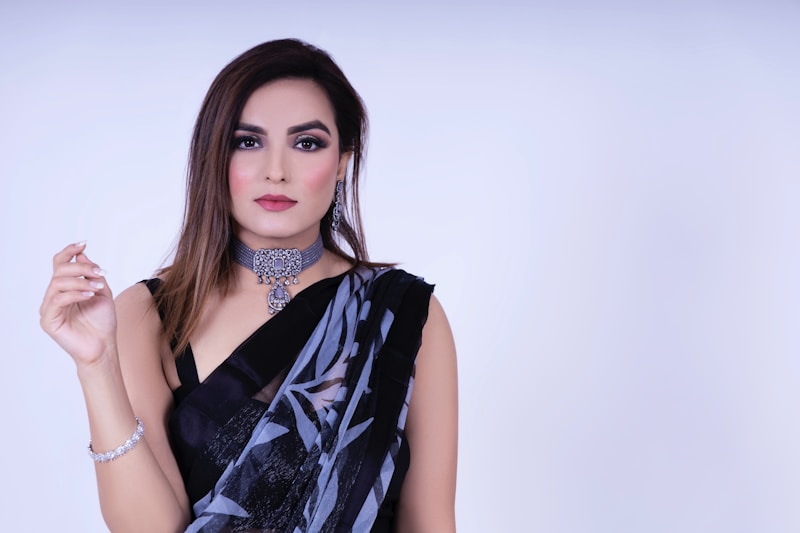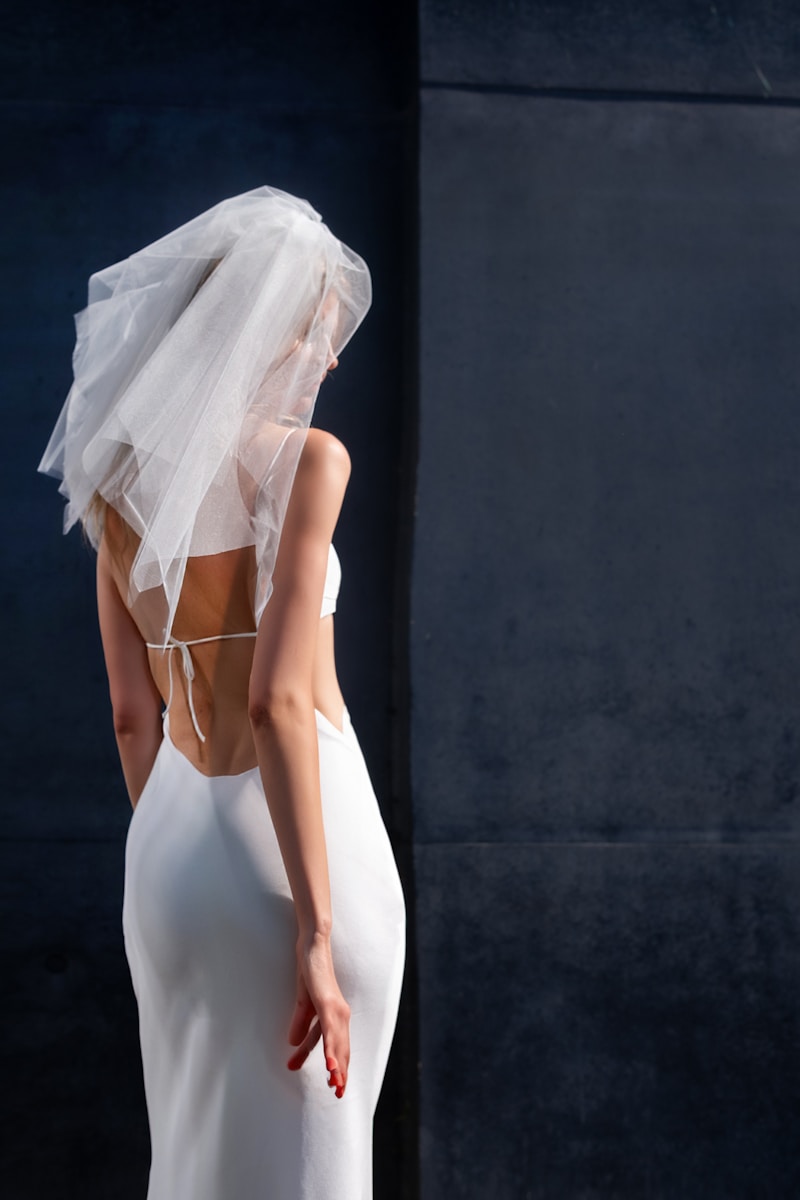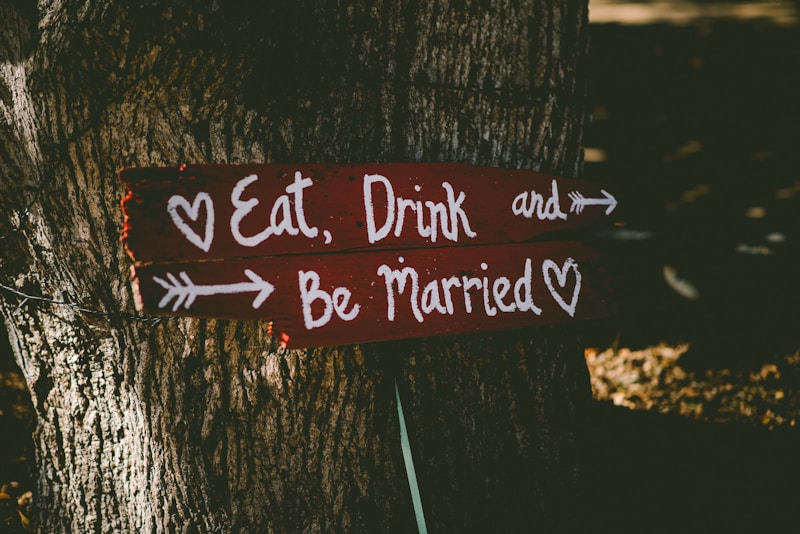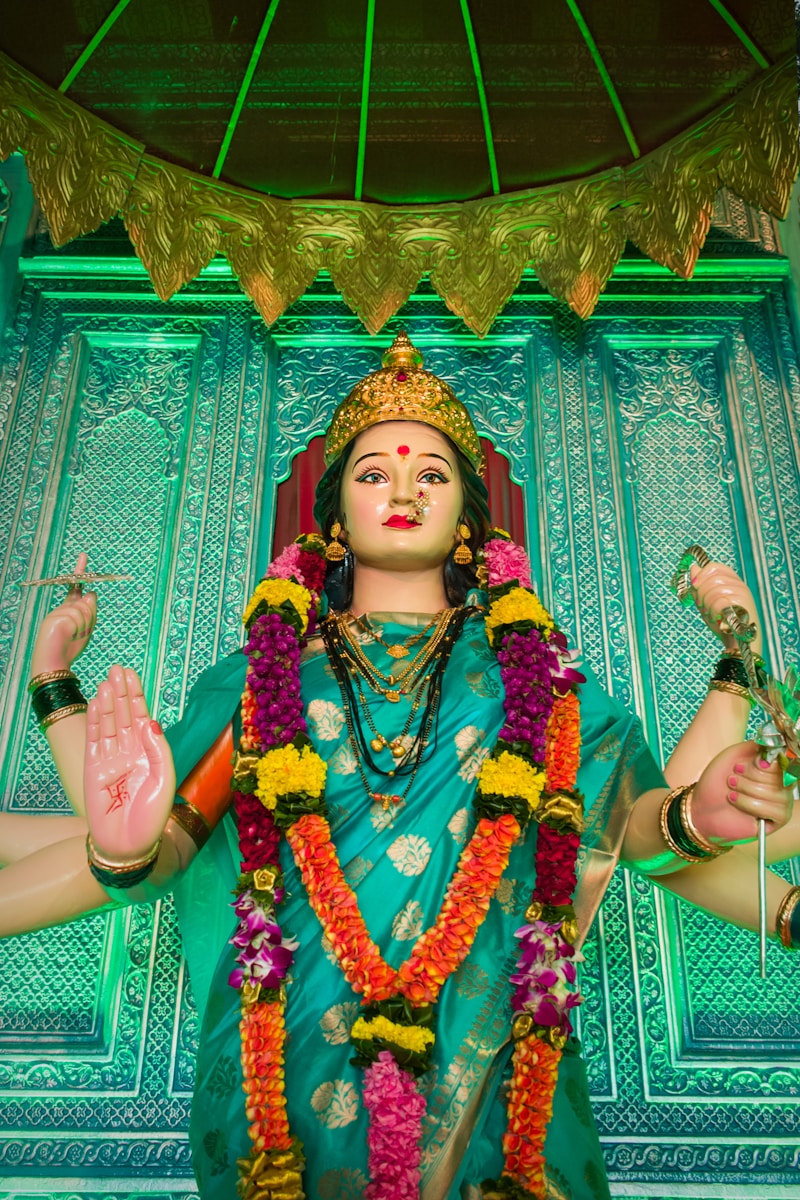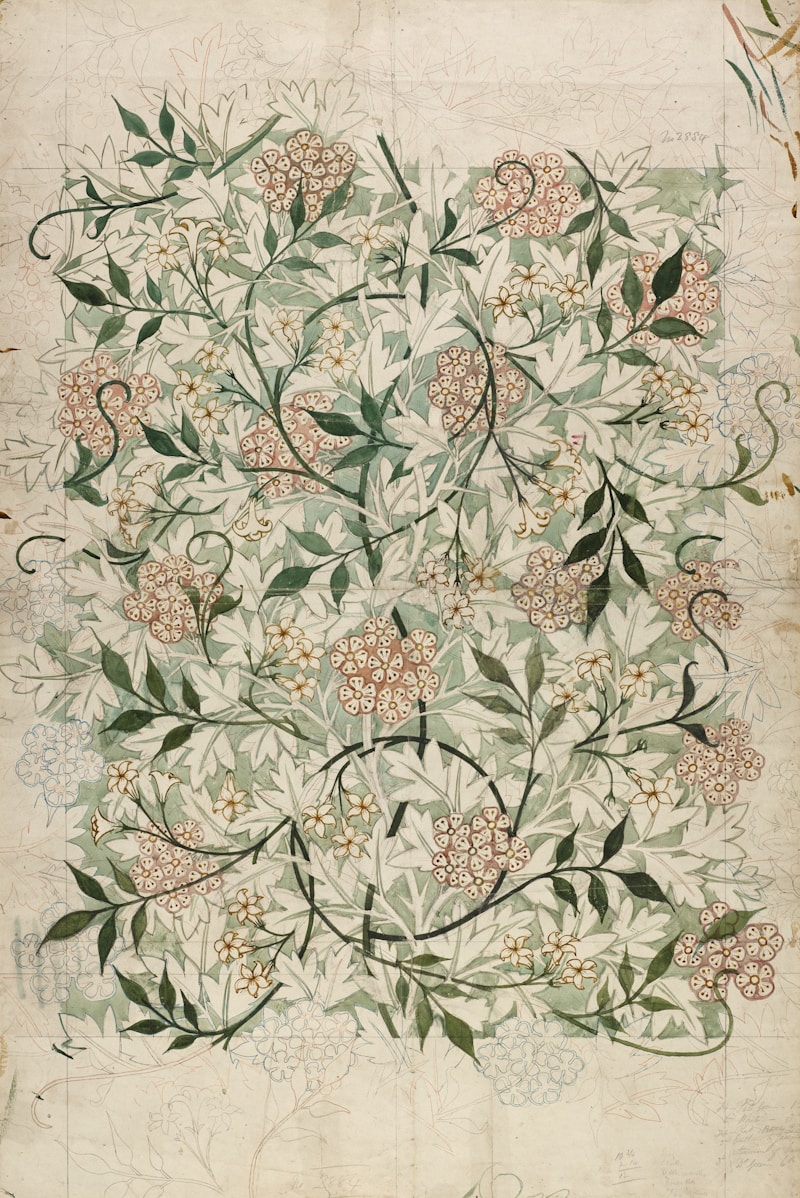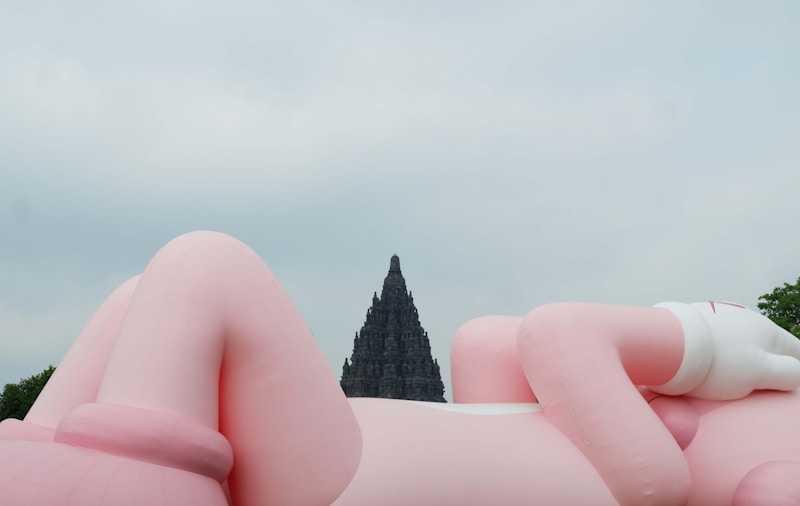Inspirational Real Wedding Stories: A Journey of Love and Commitment
Are you in search of heartwarming and inspirational real wedding stories that can enhance your celebration and bring a profound sense of joy? Weddings are not just events; they are a blend of emotions, cultures, and personal narratives that tell a couple's love story. In this article, we will explore a variety of inspirational real wedding stories, which can provide ideas for your wedding, inspire unique themes, and show how love triumphs through diverse circumstances.The Power of Love in Unique SettingsEach wedding is unique and often reflects the personalities and backgrounds of the couple. Here are some amazing real wedding stories that stand out due to their creativity and emotional depth.CoupleSettingUnique ElementLaura and JamieMountain CabinDIY DecorSarah and TomBeachsideCharity contribution instead of giftsEmily and MichaelHistoric CastleMedieval-themed attireKate and MarkUrban RooftopLive art performance during ceremonyLaura and Jamie: A Mountain Cabin RetreatLaura and Jamie chose a picturesque mountain cabin for their wedding, surrounded by pine trees and stunning views. The couple wanted to create an intimate atmosphere, inviting only close family and friends. They took the DIY route for their decor, incorporating personal touches such as hand-painted signs, floral arrangements they crafted together, and a fire pit for a cozy post-ceremony gathering. Their love story is not just about their relationship but highlights the importance of community and love shared wit...
Couture vs. Ready-to-Wear Bridal: Which Style Is Right for You?
When it comes to choosing the perfect wedding dress, brides-to-be often find themselves torn between two main styles: couture and ready-to-wear bridal. Each option has its unique qualities, benefits, and price points that can significantly influence a bride's decision. In this article, we will explore the differences between couture and ready-to-wear bridal, helping you make the best choice for your big day. Understanding Couture BridalCouture bridal wear represents the pinnacle of luxury in the fashion world. Typically made by high-end designers, couture dresses are custom-made for each individual bride, ensuring an unparalleled fit and style that is unique to the wearer. These garments are often handcrafted with exquisite attention to detail, employing precious fabrics and intricate embellishments.The Craftsmanship Behind CoutureThe process of creating a couture gown is meticulous and time-consuming. Designers usually allot several months to complete a dress, involving multiple fittings to guarantee the exact measurements are met. This high level of craftsmanship results in a truly bespoke garment.Price Point of Couture DressesHowever, this luxury comes at a cost. The price of a couture bridal gown can range from $5,000 to over $30,000, depending on the designer and intricacy of the garment. While this may seem exorbitant, many brides see it as an investment, knowing they will wear the dress of their dreams on one of the most important days of their lives.What About Ready-t...
Exploring Fashionable Wedding Dress Lengths for Every Bride
When planning a wedding, one of the most critical aspects to consider is the choice of the wedding dress. Among the various elements that come into play, the length of the wedding dress is a significant factor that can influence the overall look, style, and practicality of the gown. In this article, we will delve into the various fashionable wedding dress lengths, helping brides choose the perfect style that reflects their personality and complements their wedding theme.Understanding Different Wedding Dress LengthsWedding dresses come in a variety of lengths, each with its unique charm and appeal. Understanding these lengths can help brides make an informed choice. Here are the most popular wedding dress lengths:LengthDescriptionBall GownThis classic style features a fitted bodice and a full skirt that extends to the floor, perfect for a formal wedding.A-LineA flattering silhouette that is fitted at the waist and flows gently down to the ground, resembling the shape of a capital letter 'A.'MermaidThis style hugs the body from the chest to the knee and then flares out, emphasizing curves beautifully.SheathA form-fitting dress that flows straight down from the neckline to the hem, offering a sleek and modern look.Tea LengthThis style falls between the knee and ankle, striking a balance between formal and casual, perfect for less traditional weddings.MiniA daring choice that ends above the knee, perfect for a fun and informal celebration.Choosing the Right Length for Your Weddin...
Symbolism in Bridal Attire: Unveiling the Deep Meanings Behind Wedding Fashion
Understanding the Symbolism in Bridal AttireBridal attire has been a focal point of weddings for centuries. Beyond mere aesthetics, every piece of clothing carries deep-seated meanings and cultural significance. In this article, we explore the symbolism in bridal attire, examining how different elements of wedding fashion reflect history, culture, and personal values, ultimately weaving a tapestry of significance into the fabric of love.The Historical Context of Bridal AttireThe history of bridal attire is rich and diverse. Traditionally, the color white symbolizes purity and innocence, a notion popularized by Queen Victoria in the 19th century. However, in various cultures, different colors carry unique meanings. For example, in many Asian cultures, red symbolizes happiness and prosperity, making it a popular choice for brides. Understanding these historical contexts enhances our appreciation of symbolism in bridal attire.Color Symbolism in Bridal AttireColorSymbolismWhitePurity, innocenceRedHappiness, prosperityBlueLoyalty, trustGreenGrowth, fertilityPurpleLuxury, powerAs observed in the table, each color chosen for bridal attire can evoke different emotions and convey essential messages about the bride and her aspirations for her married life. Choosing the correct color not only enhances the overall aesthetic but also intertwines cultural significance with individual identity.Styles and Cuts: More than Just FashionThe style and cut of bridal attire also serve as a means of...
Exploring the Emotional Aspects of Dress Shopping: A Journey Beyond Fabric
Understanding the Emotional Aspects of Dress ShoppingWhen we think about shopping for dresses, the first things that often come to mind are fabric, design, and price. However, the emotional aspects of dress shopping cannot be underestimated. Whether it's for a special occasion or casual wear, how we feel when we shop can greatly affect our overall experience. In this article, we will delve into the various emotional triggers that accompany dress shopping, explore how these aspects impact consumer behavior, and offer insights on how to make the most out of your shopping experience.The Emotional Connection to ClothingClothing is more than just a cover for our bodies; it is a reflection of our personality and identity. From the thrill of finding the perfect dress to the disappointment of trying something on that doesn’t fit, our emotional journey while shopping is intricate and profound. Understanding these emotional connections can enhance our shopping experience. Below are some key emotional aspects of dress shopping:EmotionsDescriptionExcitementThe anticipation of finding the perfect dress can evoke a sense of excitement, making the shopping experience enjoyable.ConfidenceA well-fitting dress can boost self-esteem and create a sense of empowerment.DisappointmentWhen expectations are not met, such as size or design, it can lead to feelings of frustration.JoyDiscovering an unexpected gem or getting compliments can inspire joy and satisfaction.The Role of Social InfluencesThe pe...
Cultural Influences on Wedding Fashion: A Global Perspective
Weddings are one of the most celebrated events across the globe, representing love, unity, and cultural traditions. However, one of the most fascinating aspects of weddings is how these ceremonies are influenced by culture, particularly when it comes to fashion. In this article, we will delve into the various cultural influences on wedding fashion, exploring different styles, significant elements, and regional variations.The Essence of Wedding FashionWedding fashion is more than just a dress or a tuxedo; it is a reflection of traditions, beliefs, and societal norms. Different cultures have unique characteristics that shape their wedding attire. Understanding these influences can not only enrich the personal wedding experience but also provide valuable insights into the diversity of global celebrations.1. Traditional Attires Around the WorldAcross continents, wedding attire is deeply embedded in cultural expressions. Here’s a look at how different cultures influence wedding fashion:CultureTraditional AttireKey FeaturesChineseQipao or CheongsamBright red colors, intricate embroidery, often accompanied by gold jewelryIndianSaree/Lehenga for brides, Sherwani for groomsVibrant colors, heavy embroidery, often featuring a dupattaJapaneseShiromukuTraditional white kimono, elaborate obijime, and kanzashi hair ornamentsGreekWhite Wedding Dress with LaceSimple yet elegant, often adorned with a Stefana (crown)ScottishKiltSymbolizing clan heritage, often with tartan patternsMexicanHuipil ...
Budgeting for Wedding Apparel: A Complete Guide
Understanding the Importance of Budgeting for Wedding ApparelPlanning a wedding can be as thrilling as it is daunting. One of the most crucial elements to consider in your wedding budget is the apparel. From the bride's gown to the groom's tuxedo, budgeting for wedding apparel can significantly impact your overall financial plan for the big day. In this guide, we will explore various aspects of budgeting for wedding attire, give you practical tips, and help you make informed decisions.Why Budgeting for Wedding Apparel is EssentialWeddings often come with high expenses. By setting a specific budget for wedding apparel, you can ensure that this part of your wedding is financially manageable. Proper budgeting allows you to balance your wedding expenses while focusing on the elements that matter most to you. Here are a few reasons why effective budgeting is crucial:Prevents Overspending: A clear budget helps you avoid impulse purchases that can lead to financial strain.Clarifies Priorities: Setting a budget enables you to allocate funds based on what’s most important to you, whether that’s the bride's gown, accessories, or the groom's suit.Encourages Cost Comparisons: Knowing your budget allows you to shop smartly and compare prices across different vendors.How Much Should You Budget for Wedding Apparel?Before you dive into the numbers, consider the average costs associated with wedding apparel. Depending on your location and the choices you make, the expenses can vary widely. Be...
Discover Surprisingly Affordable Gown Options: Elegance Without Breaking the Bank
Elegant and Affordable: Gowns That Won't Empty Your WalletWhen it comes to finding the perfect gown for a special occasion, whether it's a wedding, prom, or formal event, many assume that elegance comes with a hefty price tag. However, that's not always the case. Today, we will explore surprisingly affordable gown options that provide the elegance you desire without straining your budget.Why Affordable Gowns Are Worth ConsideringIn today’s fashion landscape, affordability meets style in numerous ways. Here are some compelling reasons to consider affordable gowns: Variety of Styles: Affordable gowns come in all styles, from classic to contemporary, ensuring you can find something that fits your taste. Accessibility: Many brands now emphasize making fashion accessible to everyone, which means high-quality materials at lower prices. Trends and Timelessness: With the rise of fast fashion, you can find trendy designs that do not compromise on quality, alongside timeless pieces perfect for any occasion.Where to Find Surprisingly Affordable Gown OptionsHere are some great places to discover affordable gowns that meet your stylistic and budgetary needs:1. Online RetailersWebsites like ASOS, lulus.com, and Zara frequently offer a vast selection of gowns that are both stylish and budget-friendly. Often, you can find discounts, sales, and exclusive online deals.2. Discount StoresStores like TJ Maxx and Marshalls sell designer gowns at a fraction of the original price. However, ...
Exploring the Most Famous Wedding Dresses in History
Introduction to Iconic Wedding Dresses Throughout history, wedding dresses have played a significant role in the celebration of love and commitment. These gowns often reflect the cultural, social, and personal values of the time and the individuals wearing them. Some wedding dresses have transcended their fabric and stitching to become icons, immortalized in fashion history. In this article, we will explore the most famous wedding dresses in history, the stories behind them, and their cultural significance. The Evolution of Wedding Dresses The concept of a wedding dress has evolved tremendously over the centuries. From traditional robes to modern couture, the styles and meanings associated with wedding dresses have changed significantly. In the past, brides often wore their best dresses, regardless of color or style. It wasn't until the mid-19th century that the white wedding dress became a symbol of purity and femininity, largely popularized by Queen Victoria of England. Iconic Wedding Dresses and Their Stories Let’s delve into some of the most renowned wedding dresses in history that have captured the hearts and imaginations of people worldwide. Dress Designer Bride Year Queen Victoria’s Wedding Dress White satin with Honiton lace Queen Victoria 1840 Grace Kelly’s Dress Helen Rose Grace Kelly 1956 Diana, Princess of Wales’ Dress David and Elizabeth Emmanuel Diana Spencer 1981 Kate Middleton’s Dress Alexander McQueen Kate Middleton 2011 Queen Victoria’s Wedding D...
The Ultimate Guide to Your Engagement to Wedding Dress Journey
Planning a wedding is one of the most exciting yet overwhelming experiences in anyone's life. The journey from engagement to choosing the perfect wedding dress entails numerous decisions that can shape your entire celebration. In this comprehensive guide, we will explore everything from how to find the right dress, the different styles available, and tips for making the entire process as joyful as possible.Understanding the Engagement PhaseThe engagement phase is not only about the proposal or showing off the ring; it's the starting point of your journey to the altar. Traditionally, engagement can last anywhere from a few months to two years, depending on personal preferences and circumstances. During this period, couples often dream about their wedding, discuss budget allocations, and start planning.Setting the BudgetBefore diving into the details of your wedding dress, it’s essential to establish a budget. Various factors play a role in determining your overall wedding budget:FactorAverage CostCommentsVenue$10,000The biggest expense for most couples.Catering$5,000Cost will vary based on guest count.Wedding Dress$1,500 – $4,000Designer dresses can cost significantly more.Photography$2,500A memory that lasts a lifetime, so worth the investment.Choosing the Right Wedding DressYour wedding dress is arguably the centerpiece of the entire wedding, symbolizing romance and individuality. The dress you choose should reflect your personality and the theme of your wedding. There are s...
Finding the Perfect Veil: Your Ultimate Guide to Choosing the Right Wedding Veil
Finding the Perfect VeilWhen it comes to planning a wedding, every detail matters, and one of the most significant accessories for a bride is her veil. Finding the perfect veil can elevate your wedding day look and provide a sense of elegance and tradition. In this article, we will explore the various types of wedding veils, how to choose the right one to complement your gown, and tips for coordinating your veil with your overall bridal style.Understanding Wedding Veil TypesBefore diving into how to choose the right veil, it is essential to understand the different types available. Each style offers a unique vibe and can dramatically change your bridal look. Below is a table summarizing the most popular veil types:Veil TypeDescriptionLengthBest ForBirdcage VeilA short, netted veil that covers only part of the face, often adorned with flowers or feathers.1-2 feetModern and vintage-inspired brides.Blusher VeilA short veil that covers the face during the ceremony, traditionally lifted by the groom.12-30 inchesClassic and romantic weddings.Waltz VeilA floor-length veil that falls around the ankle, creating a whimsical look.54-60 inchesBrides looking for a playful yet elegant appearance.Chapel VeilA long veil that trails behind the bride, offering a dramatic effect.90-108 inchesFormal and traditional ceremonies.Catedral VeilThe longest type of veil, creating a grand entrance with an extended train.120 inches and longerLavish weddings and church ceremonies.Choosing the Right Veil f...
Discovering Unique Dress Preservation Methods for Lasting Memories
Introduction to Dress PreservationPreserving a dress, especially those associated with significant life events, is an art that combines care, technique, and a deep appreciation for memories. Unique dress preservation methods not only safeguard the garment but also ensure that its beauty endures through the years. In this article, we will explore innovative methods of preserving dresses, delve into their benefits, and provide practical tips for maintaining the integrity of your cherished garments.The Importance of Dress PreservationDresses, particularly wedding gowns, prom dresses, and special occasion attire, often carry sentimental value. They encapsulate moments of joy, celebration, and personal milestones. However, without proper care, these garments can deteriorate due to environmental factors, wear and tear, and improper storage.Why Unique Methods MatterTraditional preservation methods such as dry cleaning can sometimes fall short in terms of long-term garment care. Unique dress preservation methods are tailored to enhance longevity while maintaining the fabric's integrity and aesthetic. These methods not only prevent yellowing, wrinkles, and odors but also offer environmentally friendly alternatives.Traditional MethodsUnique Preservation TechniquesDry CleaningEco-Friendly Dry Cleaning SolutionsPlastic Garment BagsAcid-Free Storage BoxesShelf StorageClimate-Controlled EnvironmentsStandard HangersSpecialty Hangers to Maintain ShapeUnique Dress Preservation Methods1. Eco-F...
Tips for Choosing the Right Neckline: Enhance Your Style with Confidence
Understanding Necklines: The Key to StyleChoosing the right neckline can transform an outfit and highlight your best features. Whether you're dressing for a casual outing, a business meeting, or an elegant evening, the neckline plays a crucial role in defining your overall look. This guide offers insights and tips for choosing the right neckline that flatters your body type and complements your personal style.Types of Necklines: A Comprehensive OverviewNecklines vary widely in style and purpose, and understanding the different types can significantly enhance your wardrobe choices. Below are some of the most popular necklines:Neckline TypeDescriptionBest ForV-NeckFeatures a V-shaped cut, elongating the neck and torso.All body types; especially great for curvy figures.Scoop NeckA round, wide neck that provides a flattering silhouette.Good for highlighting collarbones; works well for average and petite figures.Boat NeckWider neckline that runs horizontally across the collarbone.Enhances broad shoulders; perfect for formal occasions.Off-ShoulderExposes the shoulders while providing an elegant silhouette.Ideal for evening gowns and summer dresses.High NeckRises to the base of the throat, often with a fitted style.Great for cooler temperatures; complements tall and slender figures.Keyhole NecklineInvolves a cut-out shape at the neckline, adding interest.Good for evening wear; enhances femininity.Choosing the Right Neckline for Your Body TypeYour body type plays a significant role i...
Bridal Hair and Makeup to Match the Dress: A Comprehensive Guide
Introduction to Bridal Hair and MakeupYour wedding day is one of the most significant moments of your life, and every detail matters, especially your appearance. The right bridal hair and makeup can elevate your entire look and ensure you feel beautiful and confident. One of the crucial aspects of bridal styling is aligning your hair and makeup with your wedding dress. In this article, we will explore how to achieve perfect bridal hair and makeup to match your dress, ensuring you look stunning on your big day.The Importance of Coordinating Hair and Makeup with Your DressWhen planning your wedding, it's essential to consider how your hair and makeup will complement your dress. Here are several reasons why this coordination is vital: Visual Harmony: A cohesive look creates a stunning visual impact, allowing you to stand out while maintaining a perfect balance. Personal Style: Matching your hair and makeup with your dress reflects your personal style and enhances your uniqueness as a bride. Photogenic Appeal: The right combination will help you look your best in photographs, ensuring that cherished moments are captured beautifully.Choosing the Right Hair and Makeup StyleThe first step in coordinating your bridal hair and makeup is choosing the right styles. Consider various factors such as your wedding dress design, fabric, and color. Here are some popular styles of bridal dresses and the corresponding hair and makeup suggestions:Dress StyleSuggested Hair StylesSuggeste...
Discovering the Beauty of Unexpected Wedding Dress Colors
Embrace the Unconventional: Unexpected Wedding Dress ColorsWeddings are a beautiful celebration of love, and one of the most significant aspects of this special day is the bridal gown. While traditional white gowns have been the norm for decades, more brides are venturing into the realm of unexpected wedding dress colors. In this article, we will explore the allure of non-traditional hues, how to select the perfect shade, and tips to incorporate these unique colors into your wedding aesthetic.The Shift from Tradition to TrendThe wedding industry is constantly evolving, and brides today are embracing individuality and personal expression. As a result, unexpected wedding dress colors are gaining popularity. Instead of adhering to the timeless whites and ivories, brides are now opting for shades that reflect their personalities, themes, and the overall vibe of their wedding.Popular Unexpected ColorsHere are some trending colors that brides are choosing for their wedding gowns:ColorDescriptionBlush PinkA soft, romantic shade that adds a touch of femininity.LavenderA calm and soothing color perfect for spring and summer weddings.ChampagneA warm, neutral tone that pairs beautifully with gold accents.Dusty BlueA muted, sophisticated blue that exudes elegance.BlackA bold, dramatic choice that symbolizes modernity and confidence.Emerald GreenA rich, luxurious color ideal for a glamorous wedding theme.RedA passionate and vibrant choice, often associated with love and strength.Choosing ...
The Fascinating Style Evolution of Bridal Attire Through the Ages
The journey of bridal attire has been a captivating one, reflective of cultural, social, and economic changes throughout history. As weddings are monumental life events, the attire worn by brides has evolved dramatically, often becoming a canvas for personal expression and style. In this article, we will explore the style evolution of bridal attire, from ancient traditions to modern-day innovations.Historical Overview of Bridal AttireBridal attire has gone through various transformations influenced by numerous factors such as geography, culture, and technology. Below, we'll discuss the key historical phases of bridal style that have shaped what many couples envision for their big day today.EraBridal Attire CharacteristicsAncient CivilizationsBrides adorned in colorful garments, often with cultural symbols, and sometimes even veils to ward off evil spirits.Middle AgesRich fabrics like silk and velvet were popular, with long trains and intricate designs emerging as status symbols.Victorian EraThe introduction of the white wedding dress, popularized by Queen Victoria, setting the trend for modesty and elegance.20th CenturyRise of diversity in styles; flapper dresses in the 1920s, and more recently, modern silhouettes and couture designs.Present DayA blend of tradition and modernity, with brides incorporating personalized elements in their attire, reflecting their unique styles and identities.The Influence of Royals and CelebritiesThroughout history, many notable figures have pro...
Discovering the Beauty of Elegant Silhouettes: A Comprehensive Guide
What Are Elegant Silhouettes?Elegant silhouettes are a captivating aspect of art, fashion, and design that embody grace and sophistication. They can be manipulated through various mediums, from clothing and accessories to paintings and digital illustrations. The charm of elegant silhouettes lies in their ability to convey emotion and narrative through a simple outline. In this article, we will explore the origins, styles, applications, and how to appreciate and incorporate elegant silhouettes into your life.The Origins of SilhouettesThe term "silhouette" is derived from the name of Étienne de Silhouette, a French finance minister in the 18th century known for his frugal lifestyle. The practice of creating profiles became popular during this time as a cost-effective alternative to traditional portrait painting. As silhouettes gained popularity, they evolved into an art form, with various techniques and styles emerging across different cultures.Materials Used in Creating SilhouettesTraditionally, silhouettes were crafted from black paper, which was carefully cut to form the outlines of subjects. Today, artists utilize various materials and techniques, such as: Material Description Paper Classic medium; black paper cuttings are timeless. Wood Allows for more dimension and sturdiness. Digital Art Using software to create sleek, modern silhouettes. Fabric Common in fashion, adding texture to designs.Elegant Silhouettes in FashionIn the fashion industry, elegant silhouettes r...
Unlocking the Art of Exquisite Embellishments: Transforming Spaces and Personalities
Introduction to Exquisite EmbellishmentsIn today’s fast-paced world, the allure of creating beautiful spaces and expressing individuality has become more prominent than ever. Enter the realm of exquisite embellishments, a term that encompasses a myriad of decorative touches that elevate the aesthetic appeal of anything from home interiors to personal fashion choices. Whether it's a chic living room, a stylish outfit, or a unique gift, embellishments play an essential role in making statements that resonate.What Are Exquisite Embellishments?Exquisite embellishments refer to decorative elements that enhance the overall look and feel of an object or space. These can include intricate details such as:Jewelry and accessoriesTextile designs and patternsWall art and sculpturesFloral arrangements and natural elementsStationery and packaging designsThese decorative features not only beautify but also hold cultural significance, conveying messages and stories that resonate with individuals and communities alike.How Embellishments Impact Different DomainsThe impact of exquisite embellishments transcends various domains. Let’s dive deeper into how they influence individual styles, home décor, and events.1. Exquisite Embellishments in FashionIn the fashion industry, embellishments serve as hallmarks of creativity and personal expression. Designers often utilize embellishments to bring their artistic visions to life. From intricate beadwork to vibrant prints, these details can turn a simp...
Exploring the Dichotomy: Traditional vs. Contemporary in Art and Culture
When we delve into the realms of art and culture, we inevitably encounter the rich and intricate tapestry of Traditional vs. Contemporary. This dialogue has enthralled historians, artists, and enthusiasts alike. The profound contrast between traditional and contemporary expressions shapes not only our aesthetics but also our values, beliefs, and social dynamics. In this article, we will explore these differences, their implications in various fields, and the emerging trends that fuse these two worlds together.The Essence of Traditional Versus ContemporaryTo fully appreciate the discussion of Traditional vs. Contemporary, we must first define what we mean by these terms. Traditional art and culture typically refer to the customs, techniques, and forms that have been passed down through generations, often reflecting the history and identity of a community or society. These traditions often encompass various forms of expression, including visual arts, music, dance, and literature.On the other hand, contemporary art and culture are characterized by the practices and expressions that are current and dynamic, often responding to social, political, and technological changes. They tend to break away from conventional forms, while also embracing new mediums and concepts that reflect the zeitgeist of the times.AspectTraditionalContemporaryDefinitionCustoms, practices, and techniques from past generationsCurrent practices and expressions influenced by modern eventsCharacteristicsConsis...
Discovering the Elegance of Bohemian Flair: A Comprehensive Guide to Styling Your Space
What is Bohemian Flair?Bohemian flair, often referred to as “Boho”, is an eclectic style that embraces a relaxed, artistic, and free-spirited approach to interior design and fashion. Rooted in the lifestyle of artists and intellectuals, this style is characterized by vibrant colors, diverse patterns, and a combination of vintage and modern elements. In this article, we will delve into the essence of Bohemian flair, how to incorporate it into your home decor, and tips for achieving the perfect Boho look.Key Characteristics of Bohemian FlairTo truly capture the essence of Bohemian flair, it’s essential to understand its key characteristics:Eclectic Combinations: Mixing and matching patterns, colors, and textures is the heart of Bohemian style.Earthy Colors: While Bohemian decor can be vibrant, earth tones like browns, greens, and ochres are also dominant.Natural Materials: Incorporating wood, wicker, and natural fabrics helps create a warm and inviting atmosphere.Global Influences: Bohemian style often draws inspiration from various cultures, integrating elements from around the world.Artistic Touch: Personal artwork, handmade crafts, and unique finds give a home that curated yet personal feel.The History Behind Bohemian FlairThe term “Bohemian” originated in the early 19th century in France to describe the unconventional lifestyle of artists and writers. The term was then applied to a style of art and fashion that combined the elements of various cultures and histories, creati...
